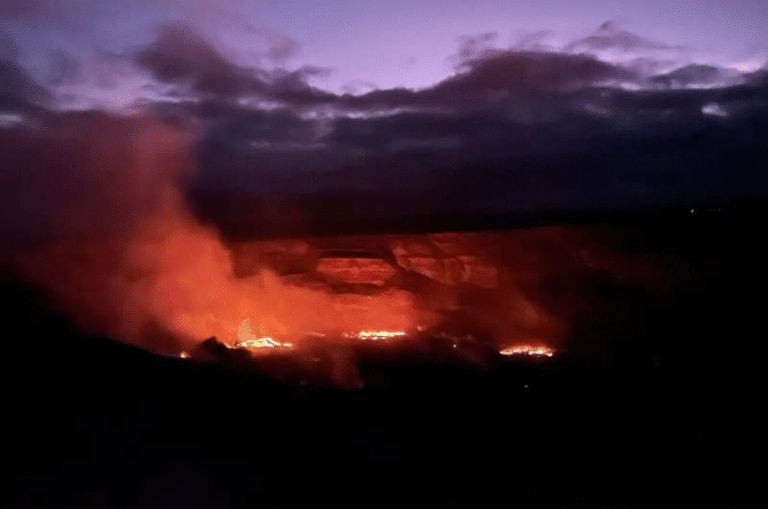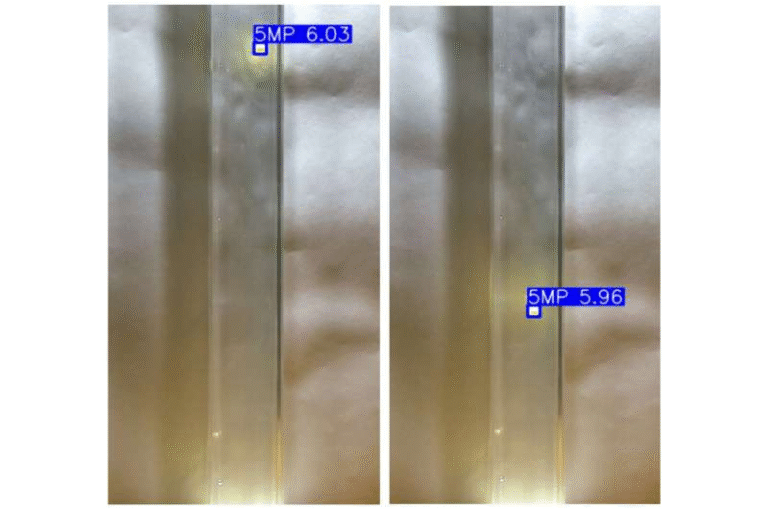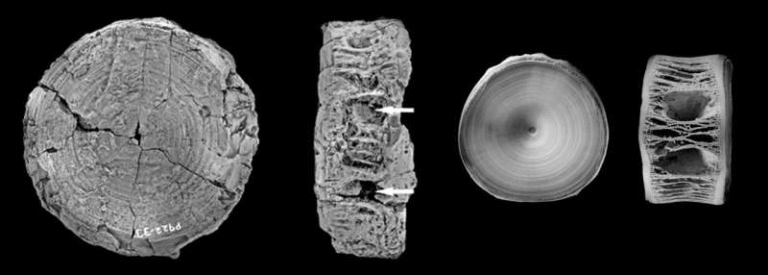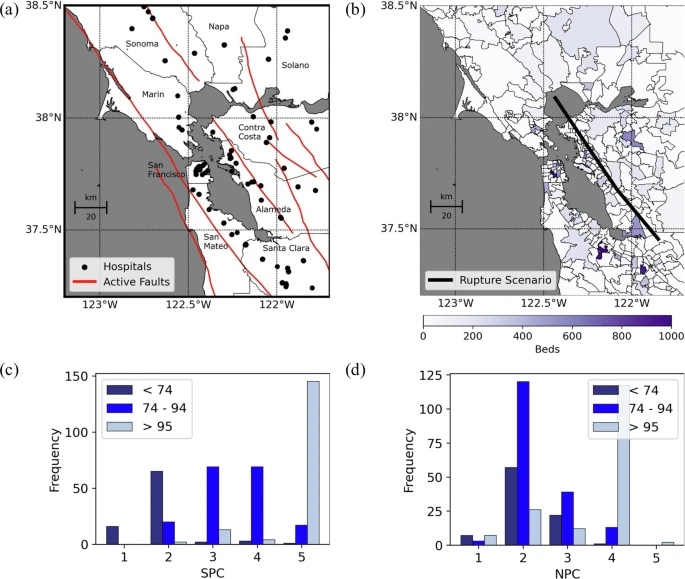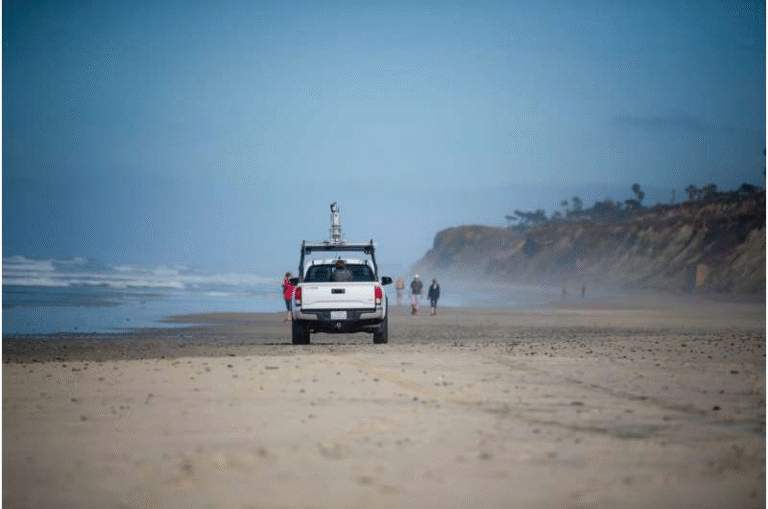Earth’s Crust Is Splitting Apart off the Pacific Northwest: Scientists Catch a Subduction Zone in the Act of Dying

A fascinating geological event is unfolding deep beneath the Pacific Northwest—Earth’s crust is literally breaking apart, and scientists have managed to capture this rare process with remarkable clarity. Off the coast of Vancouver Island, a subduction zone—the boundary where one tectonic plate slides beneath another—is gradually tearing itself apart. This process, documented by researchers in a new study published in Science Advances, provides one of the most detailed looks yet at how tectonic plates die and how new geological boundaries are born.
A Rare Glimpse into a Dying Subduction Zone
The research centers around the Cascadia Subduction Zone, where the Juan de Fuca and Explorer plates are slowly sinking beneath the North American plate. Subduction zones like Cascadia are among the planet’s most powerful engines. They create mountain ranges, fuel volcanic eruptions, and generate some of the world’s largest earthquakes. But like everything on Earth, these colossal systems don’t last forever.
Using high-resolution seismic imaging, scientists have now observed what happens when one of these massive systems begins to fail. Instead of collapsing all at once, the Cascadia subduction zone is breaking down piece by piece, forming microplates and revealing a process that may take millions of years to fully play out.
This unprecedented imaging was made possible by the 2021 Cascadia Seismic Imaging Experiment (CASIE21), a large-scale research mission supported by the U.S. National Science Foundation (NSF). Aboard the research vessel R/V Marcus G. Langseth, scientists from multiple institutions—including Louisiana State University, the University of Washington, Oregon State University, Auburn University, the University of Texas at Austin, and several others—collected seismic data to “see” what’s happening beneath the seafloor.
By sending controlled sound waves into the ocean floor and recording their reflections with a 15-kilometer underwater sensor array, researchers created a detailed “ultrasound” of the Earth’s crust. The resulting images showed deep tears and fault lines slicing through the oceanic plate—strong evidence that the Cascadia subduction zone is not a single continuous slab but a patchwork of fragments at different stages of breaking apart.
What Exactly Is a Subduction Zone?
To appreciate how big a discovery this is, it helps to understand what a subduction zone actually does. Earth’s outer shell—the lithosphere—is made up of giant plates that move slowly over the molten mantle. When two plates meet, one often slides under the other and sinks into the mantle, a process called subduction.
This recycling mechanism drives plate tectonics, creating new crust at spreading ridges and destroying old crust at subduction zones. It’s also responsible for powerful earthquakes, volcanic eruptions, and the gradual movement of continents.
However, subduction zones are not permanent. They can form, evolve, and eventually die. What causes their death has long been a mystery—until now.
A Plate in the Process of Falling Apart
In the Cascadia region, the Juan de Fuca and Explorer plates are small remnants of a much larger ancient plate known as the Farallon Plate, which once stretched from Baja California to Alaska. Over millions of years, the Farallon Plate has been subducting beneath North America, breaking apart into smaller and smaller fragments.
The new study reveals that this process is still ongoing today. Researchers found a massive tear, where one section of the oceanic plate has dropped about five kilometers below another section. This offset is essentially a rip in the subducting slab—a clear sign that it’s tearing apart from within.
Along this 75-kilometer tear, some parts remain active, producing earthquakes, while others have gone eerily silent. The quiet zones suggest that portions of the plate have already detached and are no longer in contact with the overriding crust. Once a fragment completely separates, it no longer causes earthquakes because it isn’t being squeezed or stuck—it’s simply sinking freely into the mantle.
This step-by-step collapse is called episodic or piecewise termination. Instead of an entire tectonic plate shutting down in a single violent event, it gradually tears away in smaller chunks.
The Role of Transform Faults: Nature’s Geological Scissors
One of the most interesting findings of this research involves transform faults—cracks where two plates slide past each other horizontally. These faults appear to act like geological scissors, slicing the subducting plate into segments.
Each segment eventually detaches, forming a microplate. Over millions of years, this slow-motion fragmentation can completely end a subduction zone. The process also helps explain strange features in the geological record, such as abandoned microplates or regions of unexpected volcanic activity.
For example, off the coast of Baja California, scientists have long observed fossil microplates, remnants of the once-massive Farallon Plate. Until now, researchers didn’t fully understand how those fragments formed. The Cascadia findings suggest a clear answer: subduction zones don’t die in a single catastrophic event—they unravel step by step, leaving behind a trail of broken microplates as geological evidence of their long, drawn-out demise.
What Happens When Subduction Stops?
When subduction ends, it doesn’t mean geological activity stops. In fact, new kinds of processes often begin. As each fragment of the slab detaches, slab windows—gaps where hot mantle rock can rise upward—can open. These windows may cause volcanic eruptions or heat anomalies as material from the mantle melts the overlying crust.
Over time, these changes shift plate boundaries, create new microplates, and generate new fault systems. The planet’s crust continually reshapes itself, recycling and rebuilding over eons.
This stepwise breakdown of the Cascadia subduction system may be slow by human standards—each “tear” might take millions of years—but it’s a crucial reminder that Earth is not static. Its surface is alive with motion, deformation, and renewal.
What This Means for Earthquake Risk
A natural question arises: does this mean the Pacific Northwest is now safer from big earthquakes? Unfortunately, the answer is no—at least not in our lifetimes.
The Cascadia Subduction Zone is still very much active, and it remains capable of producing massive earthquakes and tsunamis, similar to the one that struck the region in the year 1700, estimated to have been between magnitude 8.7 and 9.2.
While the new research changes how scientists understand the long-term evolution of the plate system, it doesn’t significantly alter the short-term seismic hazard. What it does do is improve how researchers model potential earthquake ruptures. Knowing where new tears and microplate boundaries exist helps scientists simulate how future quakes might propagate—or be halted—by these structures.
In other words, the study provides a better map of the hidden architecture beneath the seafloor, allowing more precise forecasting of where and how seismic energy might travel.
A Natural Laboratory Beneath Vancouver Island
The Cascadia region has long fascinated geologists, but this new discovery gives them something even rarer—a living laboratory to observe how a subduction zone dies. Most subduction zones that ended in the past did so tens or hundreds of millions of years ago, leaving only fragmented fossils of their former structure. Cascadia, however, is unraveling right now, allowing scientists to watch the process in real time.
This unique opportunity also provides a way to test long-held ideas about plate tectonics. Subduction initiation—how one plate begins to sink under another—has always been difficult to observe. Now, scientists can study the opposite process, subduction termination, which is equally mysterious. Understanding both helps explain the full life cycle of tectonic plates.
The Bigger Picture: A Planet in Motion
Earth’s crust is in constant motion. Over geological time, continents drift, collide, and break apart, while ocean basins open and close. Subduction zones are key players in this cycle. They recycle oceanic crust back into the mantle and keep Earth’s surface dynamic and ever-changing.
But if subduction never stopped, continents would keep merging endlessly, and the planet’s geography would look vastly different. The fact that subduction zones can shut down—and new ones can later form—helps maintain Earth’s balance of land and sea.
The ongoing unraveling of the Cascadia system shows that even the planet’s most powerful engines have an expiration date. The process may take millions of years, but it’s a vivid reminder of the immense, ongoing forces shaping our world beneath our feet.
Extra Insight: Subduction Zones Around the World
Cascadia isn’t alone. There are more than a dozen major subduction zones around the globe, and several show signs of change or slowdown:
- The Mariana Trench in the western Pacific marks one of the deepest subduction zones, where the Pacific Plate plunges beneath the smaller Mariana Plate.
- The Japan Trench, responsible for the 2011 Tōhoku earthquake and tsunami, is another active and well-studied example.
- Off the coast of South America, the Nazca Plate is subducting beneath the South American Plate, driving the rise of the Andes Mountains.
- Fossil remnants of ancient subduction zones can be found on land, preserved as belts of metamorphic rocks and volcanic arcs that tell stories of vanished oceans.
These global comparisons help scientists test whether the same step-by-step tearing seen at Cascadia might occur elsewhere, offering a more complete picture of how Earth’s crust evolves.
A Collaborative Effort
This groundbreaking research involved around 20 scientists from multiple universities and institutions, working together through the Cascadia Region Earthquake Science Center (CRESCENT). Their collaboration highlights the growing emphasis on understanding the tectonic and seismic hazards of the Pacific Northwest, a region home to millions of people.
Supported by the National Science Foundation under awards OCE-1827452 and OCE-2217465, the CASIE21 project continues to analyze the massive dataset it collected—data that will likely fuel new discoveries about the deep workings of Earth’s crust for years to come.
Reference
Research Paper: Slab tearing and segmented subduction termination driven by transform tectonics – Science Advances (2025)
